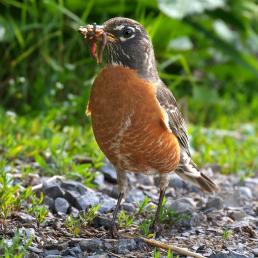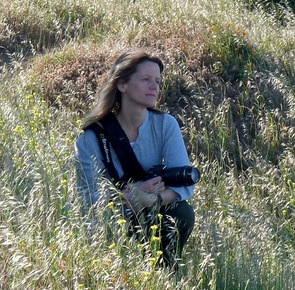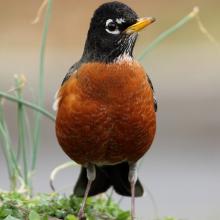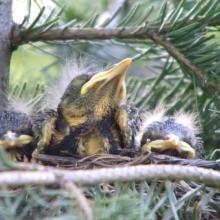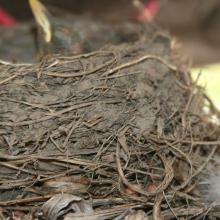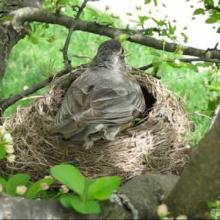

Join BirdNote tomorrow, November 30th!
Illustrator David Sibley and actor H. Jon Benjamin will face off in the bird illustration battle of the century during BirdNote's Year-end Celebration and Auction!
When scientists looked at climate data for more than 8,500 robins’ nests in the US, they found that robins will nest only if the mean noon temperature is between 45 and 65 degrees. But even more critical is relative humidity: it needs to be around 50 percent in the middle of the day. What’s so special about this combination? It’s the sweet spot when soft invertebrates like earthworms — essential food for hungry nestlings — move up near the surface of the soil. How robins sense when the humidity is 50 percent remains a mystery.
BirdNote gives you the sounds of birds every day, and you can get the sights as well when you follow us on Instagram: @BirdNote radio.
BirdNote®
Robins Are Very Choosy Nesters
Written by Bob Sundstrom
This is BirdNote.
[American Robin song, http://macaulaylibrary.org/audio/168300]
When we look for robins in spring and early summer, we often see them with their beaks full of earthworms. That tasty payload tells us a couple of things. For one thing, there’s a nest full of baby birds nearby, waiting for their next meal. But that beakful of worms is also a clue about the conditions in which robins choose to nest. [American Robin call, http://macaulaylibrary.org/audio/133356]
It turns out that robins are pretty choosy about this. When scientists looked at climate data for over 8500 robins’ nests in many parts of the US, they found that temperature is important: robins will nest only if the mean noon temperature is between 45 and 65 degrees. But even more critical is relative humidity: it needs to be right around 50 percent in the middle of the day. And if it isn’t, the birds will hold off. [American Robin call, http://macaulaylibrary.org/audio/133356]
What’s so special about this combination of temperature and humidity? It's the sweet spot when soft invertebrates move up near the surface of the soil. Like earthworms. Essential fuel for hungry nestlings. As for exactly how robins sense when the humidity is 50 percent — that's still an open question. [American Robin song, http://macaulaylibrary.org/audio/168300]
For BirdNote, I’m Michael Stein.
BirdNote gives you the sounds of birds every day, and you can get the sights as well when you follow us on Instagram, at BirdNote radio. / @BirdNoteRadio
###
Bird sounds provided by The Macaulay Library of Natural Sounds at the Cornell Lab of Ornithology, Ithaca, New York. American Robin song [168300] recorded by W L Hershberger; American Robin call [133356] recorded by G A Keller.
BirdNote’s theme music was composed and played by Nancy Rumbel and John Kessler.
Producer: John Kessler
Executive Producer: Dominic Black
© 2015 Tune In to Nature.org June 2017/2021 Narrator: Michael Stein
ID# AMRO-14-2021-6-9 AMRO-14
Sources:
http://sora.unm.edu/sites/default/files/journals/condor/v076n02/p0159-p…
http://www.wbu.com/chipperwoods/photos/robinnestlings.htm
